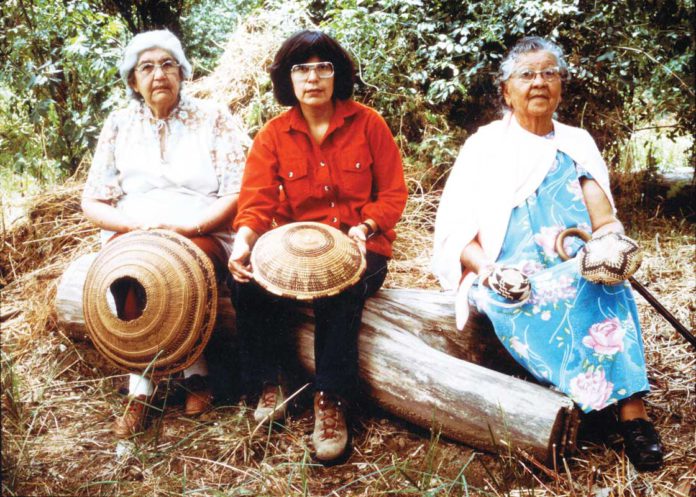One of the largest city parks in Sonoma County, set to begin construction next year, still doesn’t have a name.
That circumstance is about to change, in the wake of Healdsburg’s Parks and Recreation Commission’s hearing of proposals from a public survey that concluded earlier this year.
Currently known as Saggio Hills Park, the 38-acre plot of land adjacent to the Parkland Farms development in Healdsburg stretches to Healdsburg Avenue and Foppiano Road, the access to the Healdsburg Montage resort. The property was negotiated as a civic benefit to the resort’s development on Healdsburg’s northern edge.
The city completed the master-plan development for the new park and took ownership of the property in 2023, and the design development and construction drawings are now underway. Bidding and construction is expected to start in the fall. Details on the park development are found on the city’s website at healdsburg.gov/955/Saggio-Hills-Park-Master-Plan.
The naming procedure was based on the City of Healdsburg’s Park Naming Policy, adopted in 2002, which asks that naming of parks or recreation facilities “enhance the value and heritage of and are compatible with community interests.”
More than 30 people proposed names for the park, a few of them duplicates, during the six-month naming process. The commission’s ad hoc naming committee of Kristin Thwaites and Michiko Conklin reviewed them. Out of those 28 names, 10 were initially proposed as a working list, and five names finally presented to the full commission at their recent meeting.
Judging from comments from both the public and the commission members, there’s a clear favorite in the naming race: Laura Fish Somersal, a Pomo basket weaver thought to be the last native speaker of both the Pomo and Wappo languages, which she taught at Sonoma State University and elsewhere.
Two of the other proposed names also had a Native connection: Pomo-Wappo Park, a committee suggestion based on several proposals for Pomo Park, and Sotoyome Park, after a local tribal name that was adopted by the Spanish land grant that deeded the Healdsburg and Alexander Valley area to Henry D. Fitch.
The other names on the shortlist included Parque de Luna, after the still-living Abel DeLuna, Healdsburg’s first modern Latino mayor in the 1970s, and Smith Robinson Park, to honor the community leader of the 1940s and ’50s who attained national recognition for Healdsburg.
Given the historical and cultural heft of the shortlist, the city’s community development director, Mark Themig, said, “We made sure that the names that were being brought forward had solid historical context and didn’t have any potential issues,” by asking Holly Hoods of the Healdsburg Museum and Historical Society.
Drawing upon her resources at the historical society and museum, Hoods presented brief arguments for each of the five nominations, which she had helped cull for the larger list of 10. She pointed out that she did not submit a proposal herself, to retain some objectivity in the process.
The meeting drew fewer than a dozen spectators, and only four of them rose to the podium to offer public comment—all of them associated one way or other with local tribal interests, and all in favor of naming the park after Laura Fish Somersal.
Though little known to the wider public today, Fish Somersal, an influential member of her community as well as the larger historical context of the time, is still widely known as a “culture-bearer” by Pomo and Wappo people. One of California’s most celebrated traditional basket weavers, her work is included in the collection of the Smithsonian Institution and several other national repositories and museums, including at the Lake Sonoma Visitors Center.
Raised by a Pomo father and Wappo mother, she spoke both languages fluently, and English eventually became her third language. As well as her crafts skills and knowledge, she worked with academic linguists on documenting Native languages over three decades. She died at the age of 91, in 1990, and is buried in Shiloh Cemetery in Windsor.
“Laura was one of my favorite people—she was a sweet, smart, powerful woman,” said Sherrie Smith-Ferrie, the tribal preservation officer for the Dry Creek Rancheria Band of Pomo Indians. “I hope to grow up to be like her,” she joked.
Jack Pollard, chair of the Progressive Tribal Alliance, also spoke in favor of the name, saying that naming the park after her was “an opportunity to overcome historical traumas, some systemic injustices.”
Dillon Williams, of several Pomo-related tribes, and Scott Gabaldan, chair of the Mishewal (Wappo) tribe, also endorsed her. “Maybe you guys aren’t familiar with her, but everyone in the Indian community is. She was Aunt Laurie to so many people,” Gabaldan said.
The unanimity of their statements and clear respect and affection for Laura Fish Somersal quickly swayed the commission to support her name for the park even as they submitted the other names. “I feel strongly that we should have a point of view, and not just present a list, if we feel that one name rises above the others,” Conklin said.
Given the cultural issues attached to the Spanish land grant name Sotoyome, that possibility was eventually dropped by unanimous agreement from the shortlist that will be forwarded to the City Council for consideration, and a potential vote, at the Oct. 13 meeting.
Themig concluded the discussion with an acknowledgment of the role that public comment made in the final decision, saying, “Thank you for sharing your stories and your passion.”











